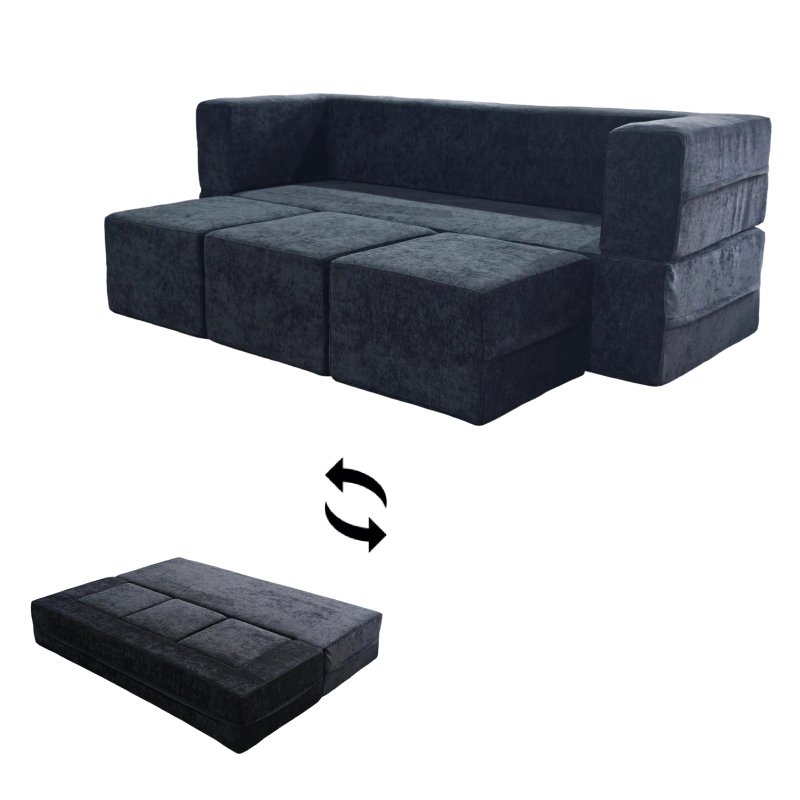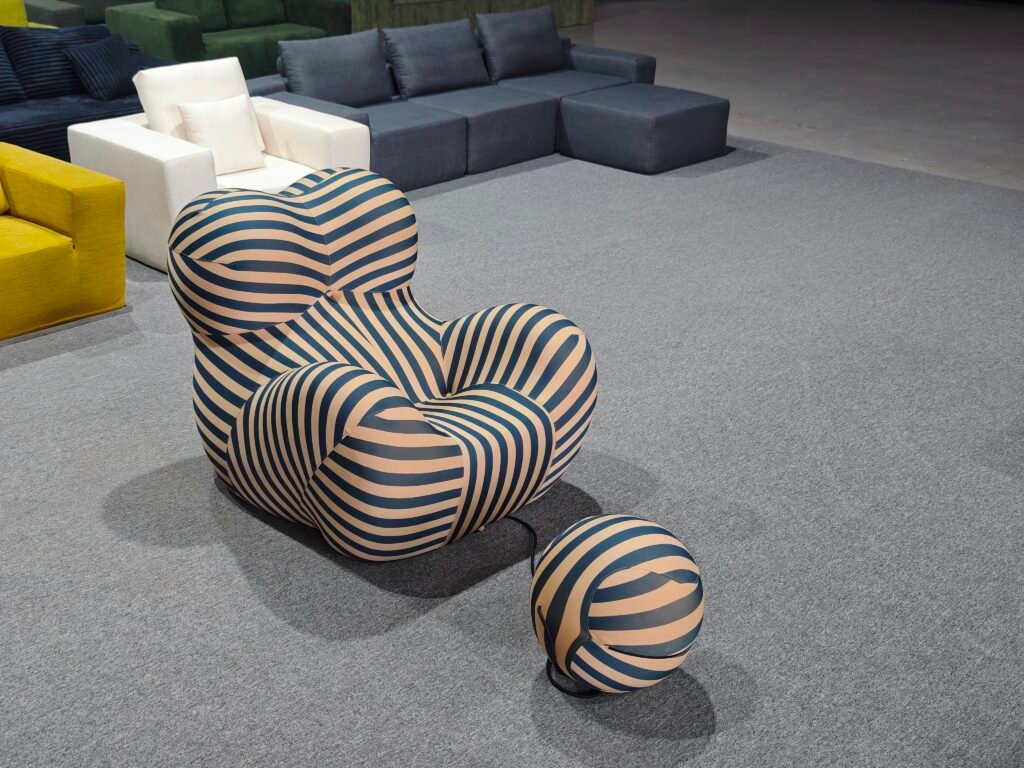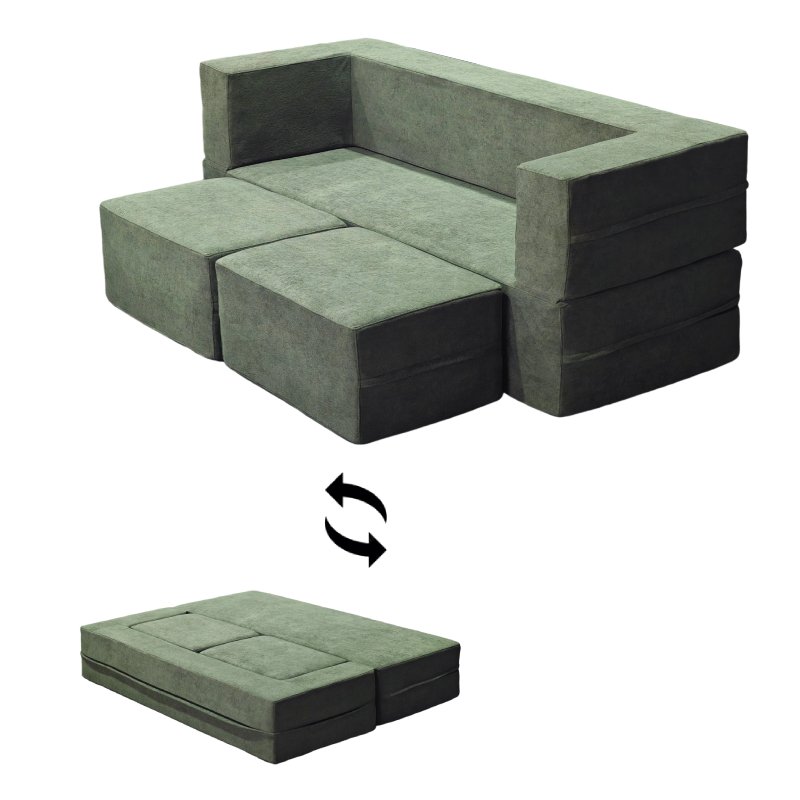The furniture industry has undergone profound changes over the past decade, fueled by evolving consumer needs, urbanization, and the rise of e-commerce. Among the most impactful innovations is the introduction of compressed sofa technology, a transformative packaging and delivery method that contrasts sharply with traditional bulky sofa shipping. For a modern compressed sofa factory such as Modular-Sofas.com, these innovations form the cornerstone of efficient production, reduced costs, and heightened customer satisfaction.
This article provides an exhaustive exploration into why compressed sofas outperform conventional sofa packaging methods across multiple dimensions—logistics, cost, environmental sustainability, user experience, and design flexibility. By analyzing each aspect in detail, with reference to industry standards and Modular-Sofas.com’s expertise, readers will gain a full understanding of this key furniture revolution.


Understanding the Basics: Traditional Sofa Packaging Versus Compressed Sofa Packaging
To appreciate the advantages of compressed sofas, it is essential to first grasp how traditional sofa packaging compares to the newer vacuum-compression method.
Traditionally, sofas are manufactured and shipped mostly assembled or semi-assembled. This requires large, bulky cartons or plastic wraps sized to fit the finished product, often with foam inserts and protective materials to prevent damage during transit. The large size and shape result in inefficient use of container and storage space.
In contrast, compressed sofas employ modular, foldable designs with flexible materials that allow sofas to be vacuum-sealed and tightly compressed into much smaller packages. This often results in a volume reduction of up to 85-90%, enabling multiple units to be shipped or stored in volumes that would otherwise accommodate only a fraction of the quantity.
Below is a table summarizing key packaging features comparing the two methods:
| Feature | Traditional Sofa Packaging | Compressed Sofa Packaging |
|---|---|---|
| Packaging Size | Very large boxes, limited compressibility | Compact, vacuum-sealed boxes with minimal volume |
| Volume Reduction | None to negligible | Up to 85-90% compression volume reduction |
| Shipping Requirements | Larger trucks, higher space demand | Smaller vehicles or higher container density |
| Logistics Handling | Labor-intensive due to bulk | Easier handling with lightweight boxes |
| Storage Space Required | Extensive warehouse space | Up to 95% less space required |
| Assembly Requirement | Mostly pre-assembled, minor setup | Requires user assembly after unpacking |
| Cost Impact | Higher due to shipping and storage | Lower due to packaging efficiency |
| Environmental Footprint | Higher carbon emissions and material use | Reduced emissions and packaging waste |
The Impact of Compressed Sofa Design Innovations
One of the primary reasons compressed sofas surpass traditional packaging lies in their fundamentally different design paradigm. To effectively compress a sofa without damage or discomfort, manufacturers, including compressed sofa factories like Modular-Sofas.com, integrate innovative engineering concepts:
- Modularity and Componentization
Rather than constructing sofas as a fixed, immovable unit, designs are modular. Components such as seat cushions, backrests, and armrests are made as separate entities that can be detached or folded easily. This segmentation allows sofas to be broken down into smaller parts during packaging. - Foldable Frame Architectures
Traditionally, solid wood or metal frames are rigid and bulky. Compressed sofas utilize foldable frames crafted with flexible joints, hinges, or collapsible segments. These allow the frame to collapse into a smaller size, critical for vacuum compression. - Use of Specially Engineered Foams and Fabrics
Foam materials such as high-resilience polyurethane foam and memory foam, used for their ability to recover shape after compression, replace conventional cushioning foams. The upholstery fabric blends are selected for flexibility and stretchability, ensuring minimal damage or wrinkling from vacuum packing.
This trifecta of modularity, foldable structural design, and material innovation empowers manufacturers to effectively reduce sofa volume while preserving durability and comfort.
Transportation and Logistics: The Greatest Efficiency Gains
Perhaps the most tangible advantage compressed sofas offer over traditional packaging is seen in transportation and logistics efficiency.
- With traditional packaging, the large, irregular shapes of sofas result in wasted space in shipping containers. Studies show that a 40-foot container typically accommodates only 30–50 traditional sofas, limited by volume and shape inefficiencies.
- Compressed sofas, by contrast, with vacuum-sealed, neatly folded packaging, can be loaded at densities of 150–300 units per container, representing up to a six-fold increase in shipping efficiency.
This dramatic volume reduction translates into lower freight costs—carriers charge primarily based on the volume occupied. Reduced shipments mean fewer trucks on the road or less ocean container space needed, directly lowering logistical expenditure and consumer prices.
Additionally, smaller, lighter packages ease:
- Loading and unloading processes in warehouses and trucks
- Home delivery logistics, enabling access to narrow stairwells or tight elevators
- Handling by customers themselves during setup
The ability to double or triple shipment quantities per container enhances warehouse space utilization and inventory turnover, key drivers of operational excellence for factories such as Modular-Sofas.com.
Cost Effectiveness: Manufacturing, Shipping, and Storage
The benefits of compressed sofa packaging are not limited to logistics. They cascade upstream to manufacturing and downstream to retail and consumer cost savings.
- Manufacturing Innovations Reduce Raw Material Waste
Modular compressed sofas optimize material use by producing componentized pieces rather than large solid frames. Use of engineered foldable metal or composite frames requires less raw material than massive hardwood frames. Optimized foam cutting minimizes waste during cushioning fabrication. - Shipping Cost Reductions Are Substantial
As noted, compressed sofas take up far less volume, causing freight charges to plummet. Individual shipment costs can decrease up to 80% depending on the shipping method and distance. - Warehouse Space Cost Savings
Compressed products need far less shelving and floor space. Efficient inventory storage reduces warehouse leasing costs and the capital tied up in stock. - Competitive Retail Pricing
All these upstream savings allow companies like Modular-Sofas.com to offer stylish, quality-driven sofas at prices significantly lower than traditional manufacturers who absorb higher logistics and storage overheads.
Ultimately, consumers benefit from better pricing without any compromise in sofa performance or comfort.
User Experience: Assembly and Convenience Considerations
Some traditional sofa buyers prefer fully assembled furniture to avoid setup time. Compressed sofas usually require some level of self-assembly upon delivery.
- Nearly all compressed sofas come with easy-to-follow instructions, and many companies provide online videos or customer support to facilitate setup.
- Assembly typically includes unfolding the frame, connecting modular parts, and fitting cushions. The tools required are generally minimal or included in the package.
- While there is an initial investment of effort by consumers, many appreciate the ability to maneuver large furniture pieces through tight spaces, often impossible with fully assembled sofas delivered through narrow doors or stairs.
- Modular designs further allow end-users to customize configurations, moving or replacing modules as needed.
Thus, compressed sofas align well with modern lifestyle flexibility, reflecting the preferences of younger, urban, and digitally-enabled customers.


Environmental and Sustainability Impact
Today's consumers and manufacturers are increasingly aware of ecological footprints. Compressed sofas contribute positively to sustainability in several ways:
- Lower Carbon Emissions Through More Efficient Shipping
More items per shipment mean fewer truckloads and cargo flights, markedly reducing CO2 emissions and fuel consumption. - Reduced Packaging Waste
Compact packaging requires less cardboard, plastics, and filler materials, minimizing landfill waste. - Material Sustainability
Prominent compressed sofa factories, including Modular-Sofas.com, incorporate eco-friendly textiles, recycled foams, and water-based adhesives, reinforcing their green commitment. - Reduced Return Freight Impact
Compact designs facilitate efficient reverse logistics, reducing emissions from potential product returns or exchanges.
Consumers increasingly select compressed sofas recognizing their superior environmental credentials compared to traditional bulky options.
Comfort and Longevity: Debunking Myths of Compromised Quality
A frequent question arises whether compressed packaging compromises sofa comfort or durability. Advances in sofa construction reassure that this is largely unfounded.
- High-Tech Foams Regain Original Shape Rapidly
Modern memory and high-resilience foams withstand deep vacuum compression without damage. Consumer reviews and testing confirm sofas maintain comfort and firmness months and years after unpacking. - Durable Frames with Engineered Joints Last Long
Foldable frame components are tested rigorously to resist fatigue or loosening. The modular nature also allows individual components to be replaced if needed. - Fabric Quality Maintained With Specialized Materials
Stretchable and wrinkle-resistant fabrics maintain visual appeal post-compression. Many sofa covers are detachable and washable, extending lifespan. - Customization Enhances Comfort
Many compressed sofas offer modular adjustments—rearranging sections, adding components—which traditional sofas do not.
Therefore, compressed sofas can match or exceed traditional sofas in comfort, durability, and user satisfaction.
Real-World Applications and Market Trends
The movement toward compressed sofas is clearly evident in several market segments and consumer behavior trends.
- Urban Living: Compact city apartments with limited access points demand space-efficient, easily maneuverable furniture.
- E-commerce Growth: Rising online furniture sales benefit from compact, reliable shipping that keeps delivery costs low.
- Mobility and Flexibility: Younger demographics and transient populations prefer easily assembled and adaptable furniture.
- Sustainability Awareness: Environmentally conscious buyers prioritize products with reduced carbon footprints and recyclable materials.
These factors combine to fuel expanding demand for compressed sofas worldwide, as reflected in Modular-Sofas.com’s growing customer base.
Detailed Comparison Summary Table
| Aspect | Traditional Sofa Packaging | Compressed Sofa Packaging |
|---|---|---|
| Volume Efficiency | No compression; bulky and space-intensive | 85-90% volume reduction via vacuum compression |
| Shipping Costs | High, due to volume and handling difficulties | Much lower owing to compact packaging |
| Storage and Warehousing | Requires large warehouse areas for bulky products | Minimal space needed, improving inventory turnover |
| Assembly Ease | Arrives mostly assembled, ready for use | Requires self-assembly, typically simple and guided |
| Material Usage | Heavy wood and metal frames, thicker foam bulk | Optimized use of lightweight foldable frames and advanced foam |
| Environmental Footprint | High carbon emissions from less efficient transport | Significantly reduced emissions and packaging waste |
| Customer Flexibility | Fixed designs, limited options | Modular, customizable configurations |
| Durability | Robust but less flexible frames | High durability with engineered foldable joints |
| Suitability for Small Spaces | Best suited for large rooms and accessible homes | Perfect for tight urban dwellings |
| Price Point | Higher due to production and logistics overhead | More competitive due to savings in shipping and storage |
The Role of Modular-Sofas.com in the Compressed Sofa Market
As a premier compressed sofa factory, Modular-Sofas.com exemplifies how innovative factory processes, sustainable material sourcing, and customer-centric modular designs come together to deliver modern compressed sofas that meet consumer expectations on multiple fronts:
- Advanced Manufacturing Capabilities: Employing robotic cutting, automated sewing, and precision assembly to ensure consistent quality.
- Sustainability Initiatives: Commitment to eco-friendly materials and carbon footprint reduction.
- User Convenience: Development of intuitive modular designs facilitating easy assembly and future reconfiguration.
- Global Logistics Optimization: Leveraging compressed packaging to reduce international shipping costs and times.
- Customer Support: Providing detailed assembly guides, tutorials, and responsive after-sales service.
By integrating these practices, Modular-Sofas.com leads in producing furniture aligned to 21st-century lifestyles and environmental demands.


Conclusion
The evolution from traditional bulky sofa packaging to compressed sofa technology marks a watershed moment in furniture manufacturing and delivery. Compressed sofas offer unmatched advantages in logistics efficiency, cost savings, environmental stewardship, and adaptability to modern living spaces.
Through innovative design—foldable frames, modular components, advanced foams and fabrics—compressed sofas endure compression cycles with no loss in comfort or durability. Their packaging enables significantly reduced freight and storage costs, passing economic benefits to manufacturers and consumers alike. While assembly is required post-delivery, flexible modular designs and customer support ease the process.
Leading companies such as Modular-Sofas.com are pioneering this shift, harnessing compressed sofa technology to meet the growing demand for stylish, sustainable, and space-savvy furniture.
For anyone in the furniture market, compressed sofas herald a smarter, greener, and more accessible way to furnish homes and offices worldwide. This movement will continue growing alongside urbanization, online shopping trends, and sustainability priorities, cementing the role of compressed sofa factories at the cutting edge of furniture innovation.